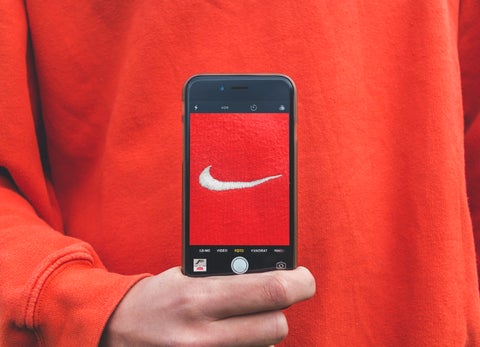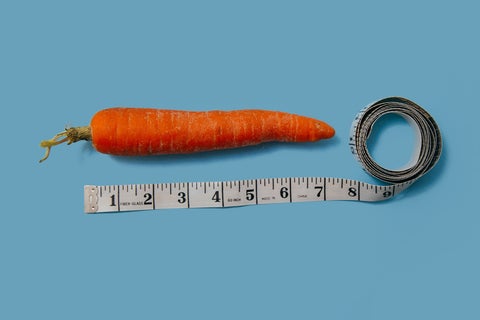What is Brand Equity — and How Can You Build it for Your CPG?
When you think of certain consumer packaged goods (CPG) products, it’s likely that one or two specific brand names pop into your mind right away. Let’s take for instance, sodas. We bet that you can name at least 5 soda brands and that you’d be willing to pay that bit extra for the real thing — rather than the knockoff.
That, friends, is brand equity in action.

Brand equity: a definition
Academic bodies define brand equity as:
Brand Equity (noun): the commercial value that derives from consumer perception of the brand name of a particular product or service, rather than from the product or service itself.
It’s similar to brand recognition, but it acknowledges how consumers will pay more for a brand that they recognize. Simply put, it’s the value that’s added by the presence of a brand name.
The good news is that — while brand equity is of course down to the way that consumers perceive your brand — it’s not entirely out of your hands. You can influence the brand equity of your CPG whenever a customer comes into contact with your brand.
For example, if a consumer reaches out to your customer service team, their experience would have an impact on brand equity. The quality of your product is also influential — with consumers judging your overall brand based on that product experience. If they were to pick up your food or beverage product and it was spoiled, it may have a negative impact on your brand equity. They’d be less likely to buy from your brand again, perceiving it to be of a lesser value.
So now that we know what brand equity is, let’s discuss why you want to focus on it for your CPG.
The benefits of brand equity
There are only pros to having brand equity. Who wouldn’t want their brand to be valuable? So while it takes quite some time to build brand equity, you’ll enjoy the positive effects for many years to come.
Gain a competitive edge
For every food or beverage product, there are thousands of other CPG brands battling for consumer attention. With higher brand equity, you’ll obtain a greater market share. Not only will consumers be more likely to recognize your brand, they’ll opt to buy it over other brands, disregarding the price.
Customers will keep coming back to your products over those of competitors. Why? Because they believe that it’s worth more due to the stamp of approval that is your brand.
It’s the “safer” option for them, too. So what if you save a few cents buying the knockoff Coca-Cola? At least with Coca-Cola, you know exactly what you’re getting.
Extend your product line with less risk
Remember, brand equity is about your brand more than your product. With greater brand equity, your customers will be more willing to try any of your products, as they’ll come to associate you — and everything you do — with a particular standard. With this in mind, you’ll be able to introduce new products without fear of them going unsampled.
Higher brand equity won’t guarantee new product success, of course. If you were to release an inferior product banking entirely on your brand equity, you may just end up damaging it — costing time and money to rebuild.
Increase your market power
With great brand equity comes great responsibility. Brands that have a larger share of the market can have a far greater impact — even within indie circles. You’ll have the pick of brand partnerships from those looking to increase their own brand equity through association or endorsement from your own.
Investment into brand equity can pay off further down the line. You’ll have greater leverage with suppliers to negotiate prices, which is always a plus. What’s more, if you were to look for investment, it would be far easier to come by if you’ve got some sway in the market.
How do you measure brand equity?
Now that you know what brand equity is and we’ve walked through the benefits, you’re probably wondering how you measure it. How do you measure the value that your brand brings to the market?
Finances
Having healthy finances typically indicates good brand equity. A positive balance sheet — showing strong profit margins, steadily growing revenue, overall business growth, reasonable cost of retaining or obtaining customers, and brand investment — can all be points of reference.
You can compare these figures to industry benchmarks to know whether or not you’re on the right track.
Brand strength
You can look at your marketing KPIs to determine your brand strength. Strong engagement on your social media and a steady growth would suggest strong branding.
Are you on track with your goals for online conversions? Do you have good customer loyalty? Are your ads giving a good return on investment? These are all questions that you can hold to your brand to determine its strength.
There are also various resources to track when and where your brand name has been mentioned online. The more it’s mentioned (in a positive manner) the stronger your brand profile.
Consumer awareness and perception
A good way to track your brand awareness is with a survey to the public. You can use this form of primary research to see not only whether they know that your brand exists, but also gauge how they feel towards it.
Beware of using leading questions, though. You may want respondents to say lovely things about your brand, but if a respondent knows it’s you asking they may just soften their response.
Beyond surveys, you could monitor social media mentions of your brand. What are people saying about your brand? What are they responding to your content? What’s the overall sentiment?
How to build brand equity
Definition? Check. Benefits? Check. Measure? Check.
Now let’s find out how to build brand equity for your CPG, so that consumers are willing to splurge a little extra on your undoubtedly superior products.
Brand awareness
In order for consumers to perceive your brand as valuable, they need to recognize it first. That doesn’t just apply to the name. True brand awareness will have consumers associating your brand with a color, a font, a shape, or more. Once you’ve got your visual branding nailed, don’t keep changing it. Consistency in branding is how your customers will hold you in mind.
Next, you’ll want to establish a compelling story behind your brand. This will appeal to consumers’ emotions and connect them to your brand in a stronger way than a product alone could ever do.
Communication
Once the branding is set, you’ll need to spread the word. It’s no good having a recognizable brand if no one ever sees it! Newsletters, advertisements, partnerships, social media content, and blogs are all great ways to spread your brand and its message.
If you’re wondering what to include in your communications, it’s great to keep customers and stakeholders informed. Share what you’re working on and let them know about positive changes or milestones achieved. People love to feel like they’re a part of, or even responsible for, brand growth.
Transparency is also vital within your communications. If you try to hide and cover up any mistakes, it will be far more damaging in the long run than if you were to be totally honest from the get-go.

Getting started
Now that you’re equipped with the knowledge you need, it’s time to get started. Building brand equity is an ongoing process — and should be worked on from the very beginning. No indie CPG brand is ever too small to think about brand value. And, if done right, it will eventually reach a point where it builds itself.
When consumers feel truly connected to your brand, they’ll begin to spread your message through word of mouth marketing — which, some argue, is the most powerful, effective, and free form of marketing.
Buffalo Market can help you build brand equity by getting your food or beverage products into the best stores around California. We’re the fastest-growing CPG distributor based in Los Angeles, specializing in purpose-driven brands.



